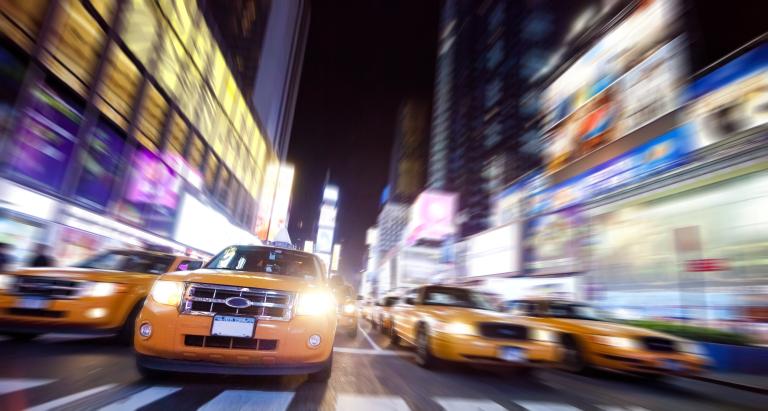The rise of digital ads on taxis, and how data drives them

Digital billboards are hitching a ride with your favorite rideshare – and they're using data to do it.
In the days of ad tycoon David Ogilvy, print, radio, and television were the most common forms of advertisement. Placed on stationary billboards, analog TVs, or in the daily newspaper, everyone was the target audience.
Today, technology has accelerated enough to revolutionize advertising, where skillful creative can be amplified with algorithms to deliver targeted messages to specific demographic areas.
Innovative start-ups like Firefly are leading the pack by taking the leap into data-driven, digital taxi-top billboards that travel around a given city, serving relevant ads according to their location. This will certainly appeal to rideshare disruptors such as Uber and Lyft who have already harnessed the power of data within their services.
Driving data
Raising $30 million in funding from investors like Google, Firefly now operates in five of the busiest US cities, including New York City, Los Angeles and San Francisco. To their credit, the data goes both ways - each digital billboard is equipped with sensors to gather data like temperature, pollution levels, and even their fleet's acceleration and braking patterns.
What's more, participating drivers collect a cut of their car's ad revenue. At a time where taxi drivers are striking over low wages – Firefly drivers could take home an extra $300 per month.
The company also sends 10% of its unsold ad inventory to non-profits and local government. For example, some billboards feature Amber Alert. And given the potential scope of their fleets, local governments could benefit as well. For example, understanding where and when drivers brake and accelerate could point to traffic patterns, which could be used to optimize city planning. And gathering pollution levels could be useful for community health officials.
Take it to the streets
As with any good idea, there are other iterations that work in similar ways. Since traveling in taxis offers plenty of opportunity for downtime – and thus a free moment to attract a new customer – it's an option other companies are jumping on. From Wrapify, who wrap ads around entire cars, to Vugo, who allow drivers to hand-select ad content for their in-car entertainment video systems, all avenues are covered.
Data has officially ascended the ranks as the world's most valuable commodity. And with scandals like Cambridge Analytica still fresh in our collective memories, advertising that incorporates data is under harsh scrutiny. But as time goes on, companies like Firefly could help to reverse that stigma by using data to provide engaging ads that we truly want to see.
Have your say
Sign up for our newsletter
Why sign up:
- Latest offers and discounts
- Tailored content delivered weekly
- Exclusive events
- One click to unsubscribe